Botanical name : Ipomoea batatas
Common name : Sweet Potato, Kumara
Easy propagation by division; Hard for seed saving
Lifecycle: Perennial, grown as an annual for eating
Pollination: Cross pollination
Mating system: Self-incompatible
Suggested spacing: Same as for eating production
Seed specific requirements: Unknown
Isolation distance: None usually required
Population size: Unknown
Seed maturity: Unknown
Processing method: Unknown
Expected seed viability: Unknown
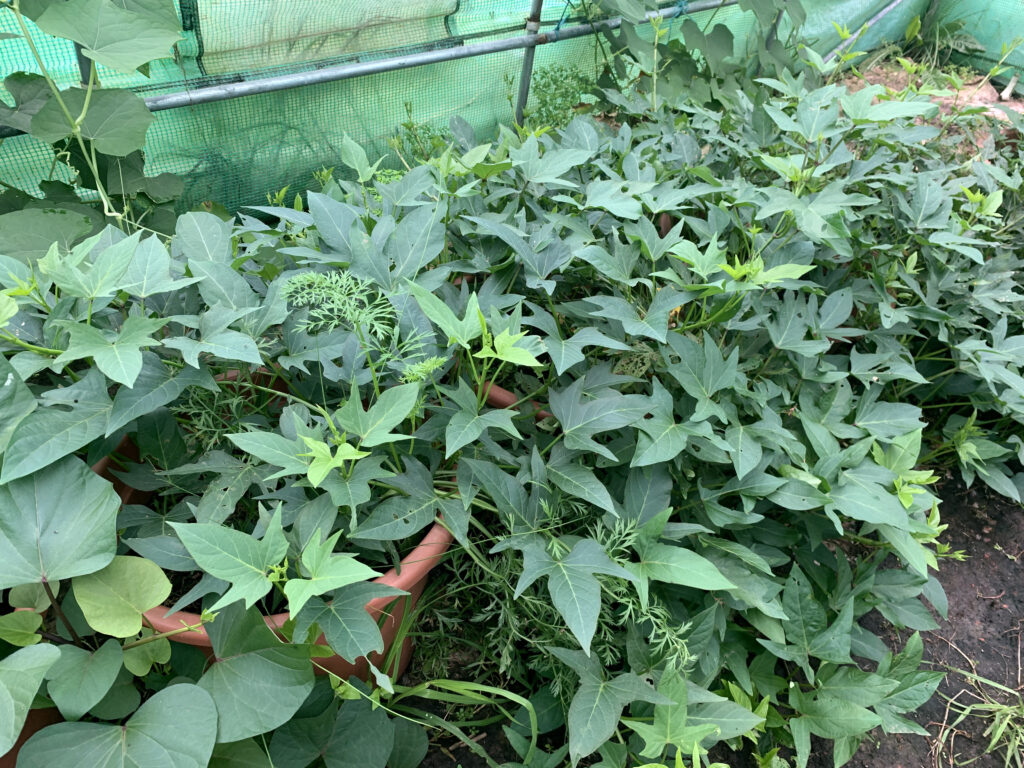
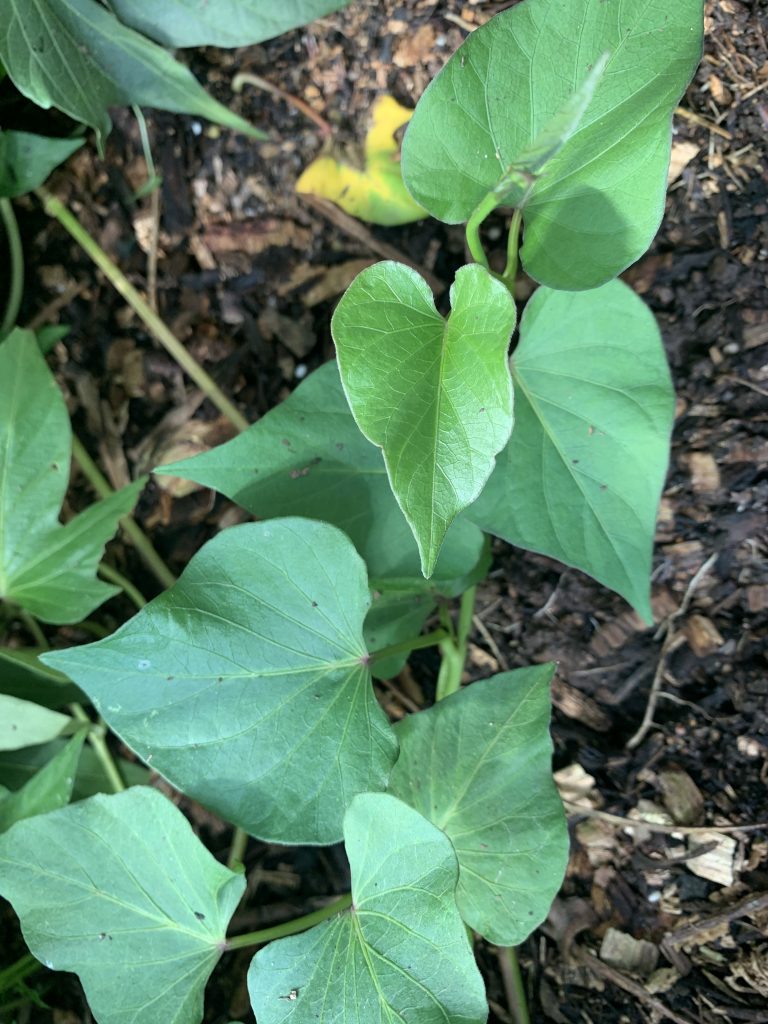
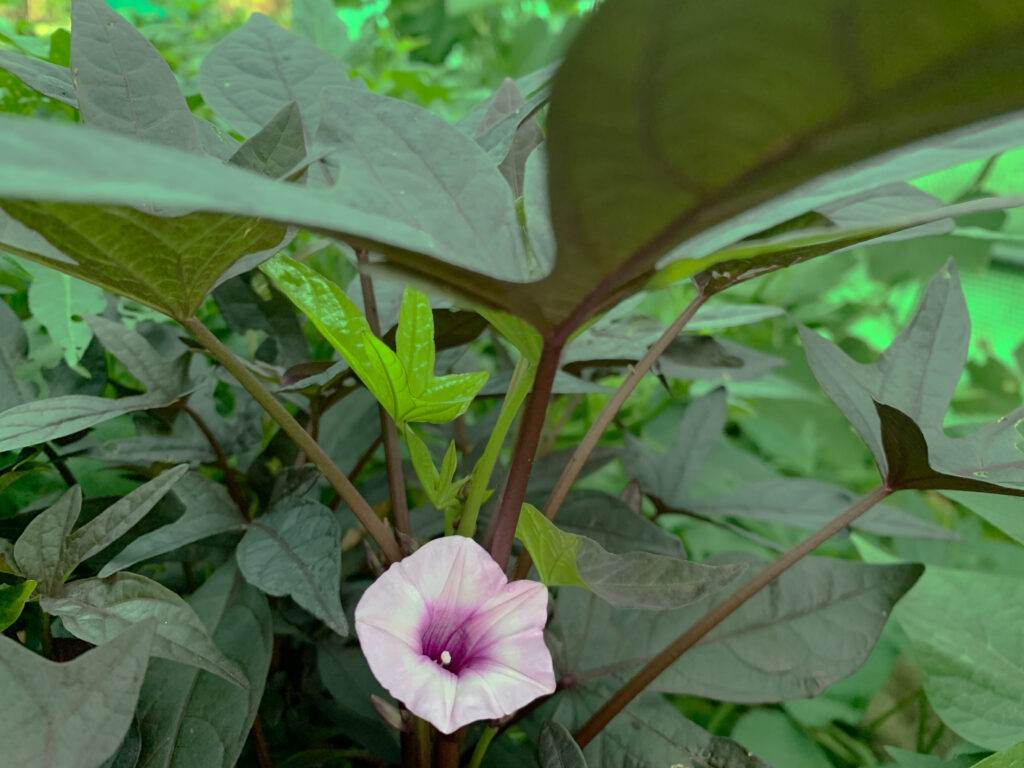
Growing for seed
Sweet potato is not usually grown to seed. As it is usually propagated clonally, many plants are largely genetically the same. Sweet potatoes are self-incompatible and flowers can only be pollinated by plants with different sweet potato genetics. This means that seed saving sweet potatoes is essentially breeding new varieties. There is no way to save seed that will come true-to-type.
Cultivation
Propagation can be easily done by division. Either tubers are used to produce shoots or stem cuttings are taken. In southern Australia they are started indoors in spring and only planted outdoors after all risk of frost has passed and the soil has warmed sufficiently. Overnight temperatures should remain above 10C.
Tubers are used to start shoots by shallowly covering them with soil, compost or potting mix and keeping them in a sufficiently warm location. Multiple shoots should appear from each tuber. These shoots are called ‘slips’. Carefully pull each slip away from the tuber and plant the slip out in its final growing location. It should have some good roots attached to its stem. If not, it will need to be potted up and treated like a cutting until sufficient roots form.
Taking cuttings of sweet potato is very easy. Cuttings of about 10cm can be taken from the tips of the plants. Most of the leaves should be removed leaving just the most immature leaves at the tip. The stems can be inserted deeply into potting mix and kept in a warm location with plenty of light. Keep them well watered. In cold areas taking cuttings and keeping a pot indoors overwinter as a lush looking pot plant is one way to ensure sweet potato harvests from season to season.
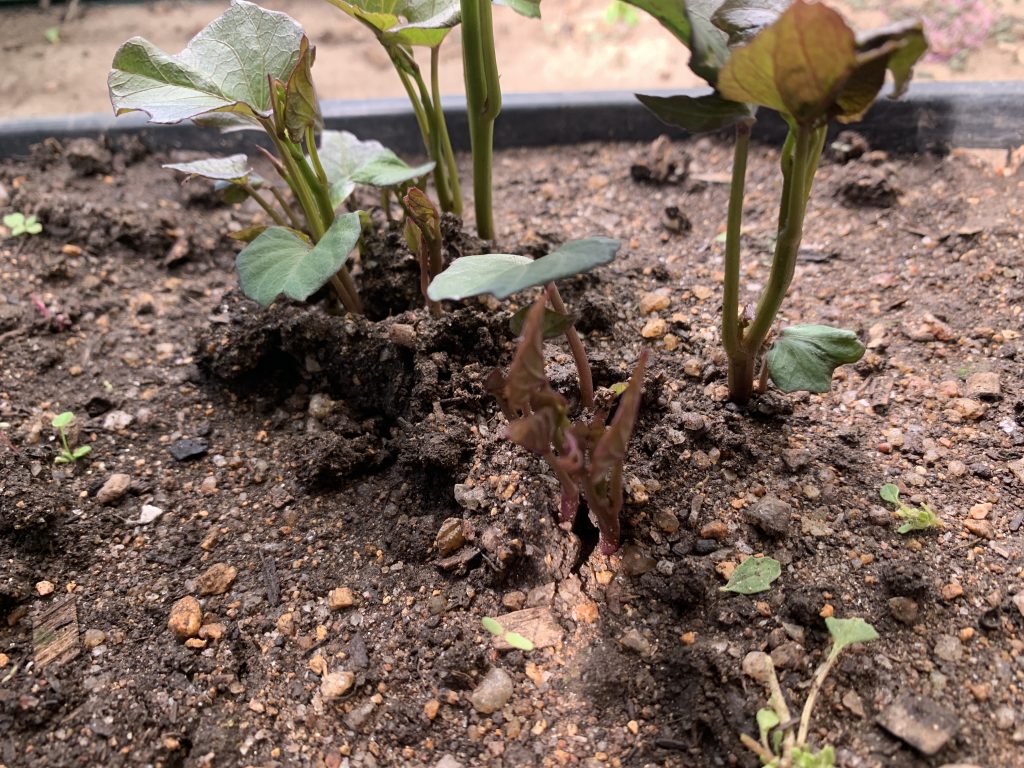
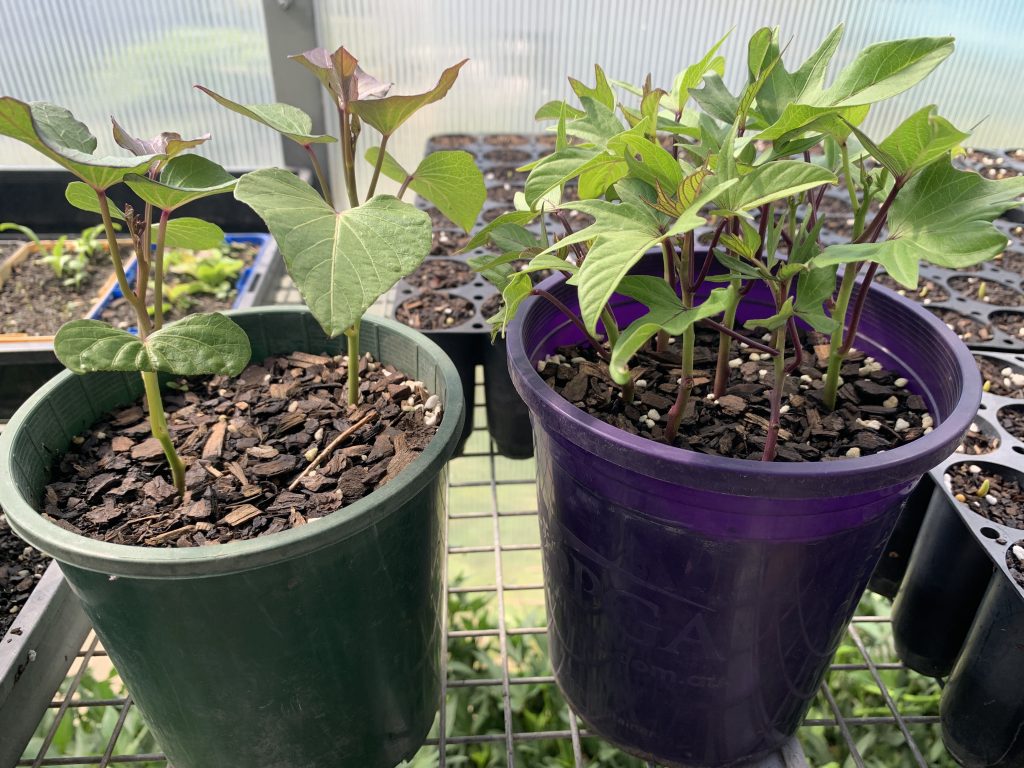
Selection
Sweet potatoes come in a variety of colours of leaf, tuber flesh and skin. Leaf shapes also vary from heart shaped to highly indented.
Harvest
Tubers can be harvested as soon as they reach an acceptable size. Being careful not to damage their skin when digging them up will help to ensure a longer storage period.
Contributors
Liz Worth, Nellie Pryke
